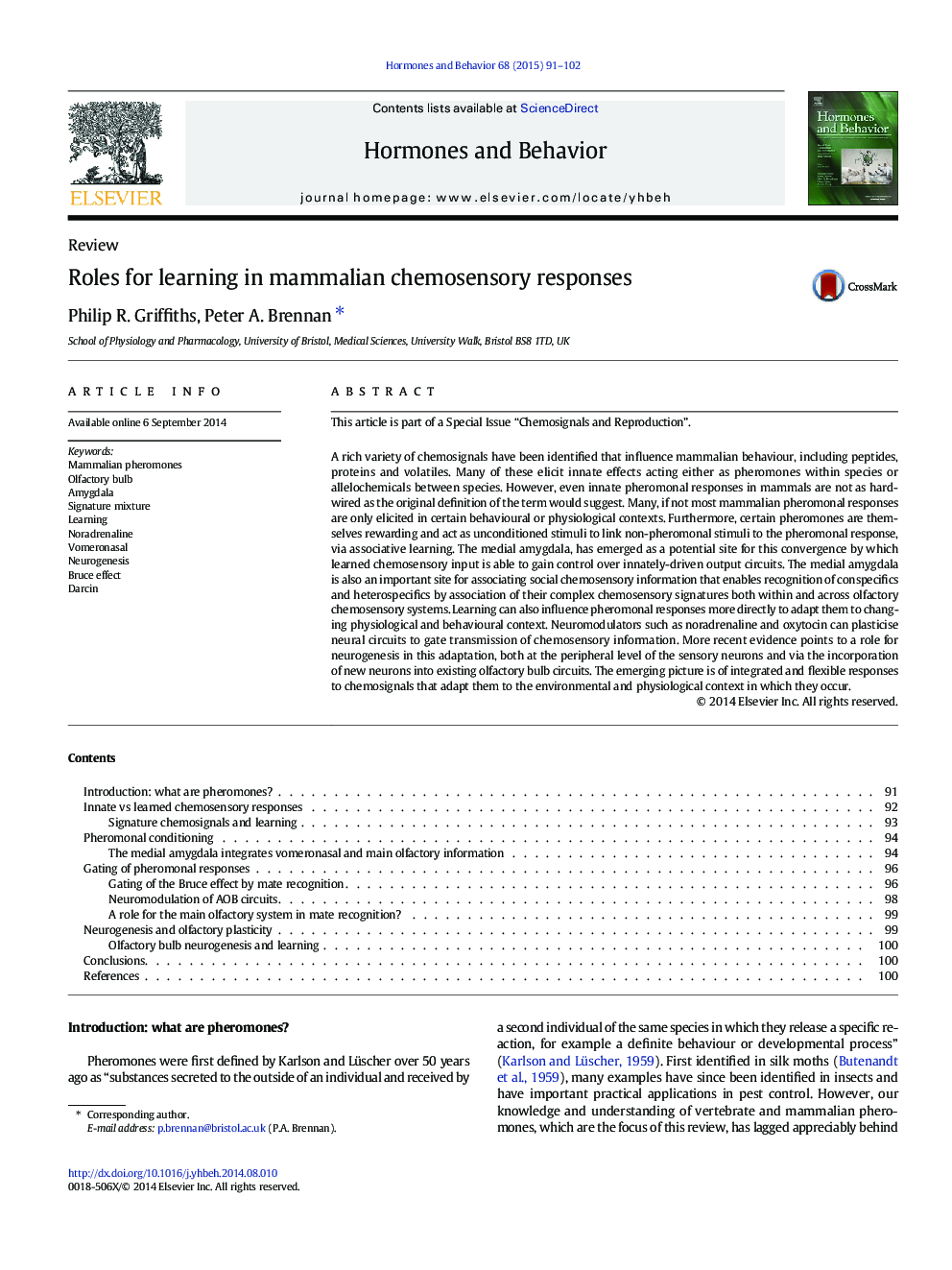| کد مقاله | کد نشریه | سال انتشار | مقاله انگلیسی | نسخه تمام متن |
|---|---|---|---|---|
| 323405 | 540641 | 2015 | 12 صفحه PDF | دانلود رایگان |
• Mammalian chemosensory responses depend on environmental and physiological contexts.
• Learning associates non-pheromonal stimuli with innately-driven outputs.
• Learning can gate the transmission of pheromonal responses.
• Neurogenesis adapts chemosensory responses to context.
This article is part of a Special Issue “Chemosignals and Reproduction”.A rich variety of chemosignals have been identified that influence mammalian behaviour, including peptides, proteins and volatiles. Many of these elicit innate effects acting either as pheromones within species or allelochemicals between species. However, even innate pheromonal responses in mammals are not as hard-wired as the original definition of the term would suggest. Many, if not most mammalian pheromonal responses are only elicited in certain behavioural or physiological contexts. Furthermore, certain pheromones are themselves rewarding and act as unconditioned stimuli to link non-pheromonal stimuli to the pheromonal response, via associative learning. The medial amygdala, has emerged as a potential site for this convergence by which learned chemosensory input is able to gain control over innately-driven output circuits. The medial amygdala is also an important site for associating social chemosensory information that enables recognition of conspecifics and heterospecifics by association of their complex chemosensory signatures both within and across olfactory chemosensory systems. Learning can also influence pheromonal responses more directly to adapt them to changing physiological and behavioural context. Neuromodulators such as noradrenaline and oxytocin can plasticise neural circuits to gate transmission of chemosensory information. More recent evidence points to a role for neurogenesis in this adaptation, both at the peripheral level of the sensory neurons and via the incorporation of new neurons into existing olfactory bulb circuits. The emerging picture is of integrated and flexible responses to chemosignals that adapt them to the environmental and physiological context in which they occur.
Journal: Hormones and Behavior - Volume 68, February 2015, Pages 91–102
